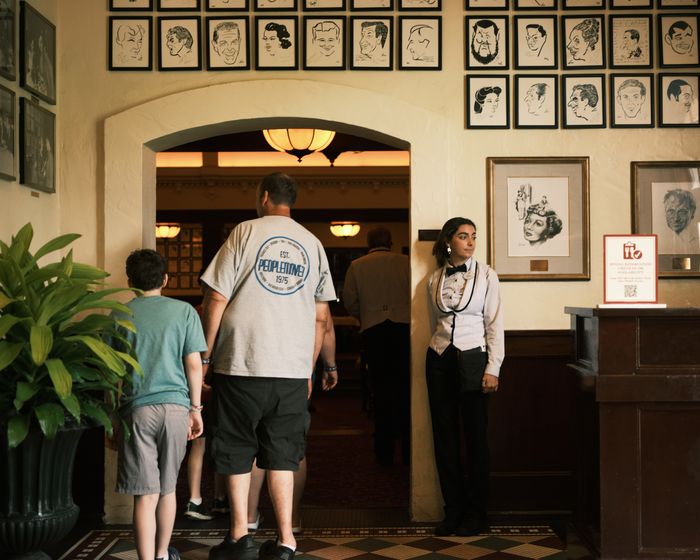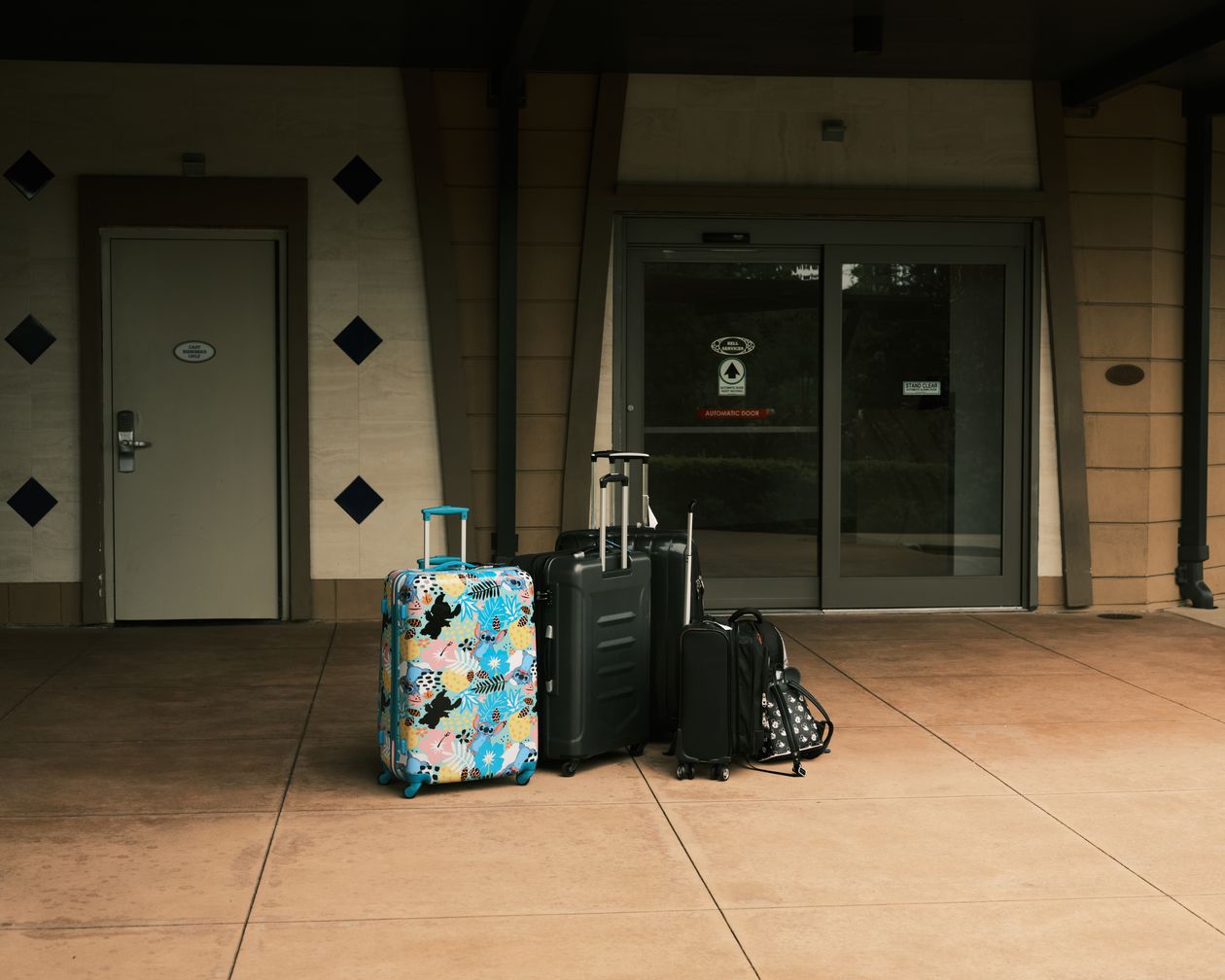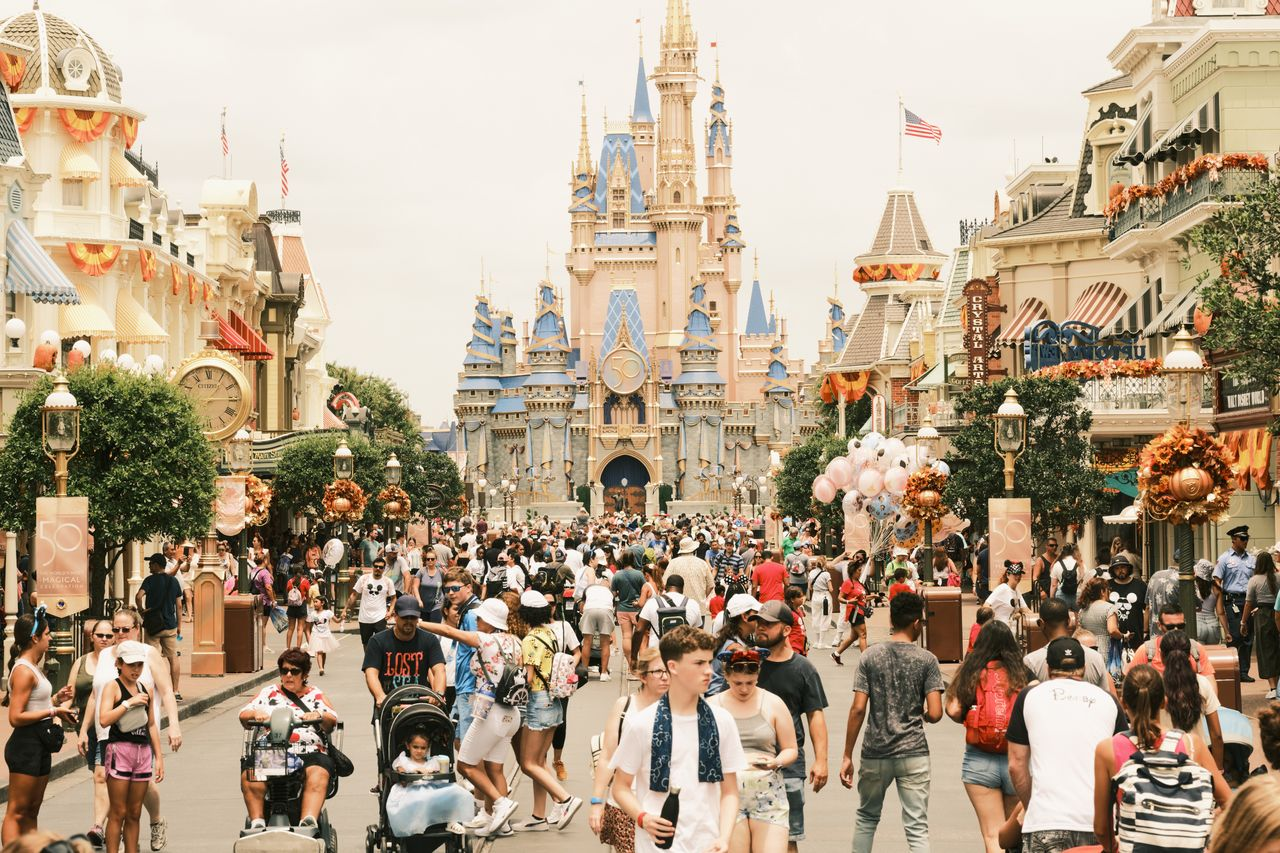Walt Disney used to call Disneyland his "magic kingdom." These days, Walt Disney Co. has a new magic trick: wringing every last dollar out of each visitor to its profitable theme parks.
Over the past two years, as Florida's Walt Disney World Resort and Southern California's Disneyland Resort have emerged from the shadow of the coronavirus pandemic, the company has made a host of changes that have sent the cost of a visit to a Disney resort skyward.
The outcome is a bonanza for Disney: Even as the company limits the number of visitors and keeps attendance at its U.S. theme parks below prepandemic levels, they are generating record sales and profits.
The results reflect a major strategic shift on Disney's part, where the company is focused less on maximizing the quantity of visitors and more on increasing how much money each visitor spends, an approach the company refers to as yield management. Improving the visitor experience, the thinking goes, will prompt guests to spend more hours -- and therefore more money -- at the parks because they are having such a good time.
The biggest change in the past two years -- and the most lucrative for Disney -- is the introduction of a smartphone-app feature called Genie+ that costs $15 per person a day, on top of the price of admission, and allows parkgoers to skip the unreserved lines for some attractions, which the company refers to as "standby." But Genie+ doesn't cover everything. To skip the standby lines at the most sought-after attractions, including some Star Wars and Guardians of the Galaxy-themed rides, reservations now cost an additional $10 to $17. Standby waits for popular attractions can last hours.
At the same time, many benefits that used to be free -- from parking for certain annual passholders to airport shuttles to MagicBand wristbands that serve as combination hotel-room keys and park passes -- have been eliminated or now come with a price. Disney has raised prices on hotel rooms, food and merchandise over the past year as inflation has climbed to record levels in the U.S.
Disney's theme-park pricing is determined by "pure supply and demand," said a company spokeswoman. "No different than airplanes, hotels or cruise ships."
In the quarter that ended Jan. 1, Disney's domestic parks set records in both quarterly revenue and operating income, then broke both of them six months later. For the quarter that ended July 2, the business unit that includes the theme parks also posted record revenue of $5.42 billion and record operating income of $1.65 billion.
Josh D'Amaro, the chairman of Disney's parks, experiences and products division, said that the changes have given visitors more choice about how to spend their time and money at the parks, while at the same time making the parks "extremely commercially successful."
In fiscal 2021, the first year that both of Disney's two main U.S. resorts had reopened following the worst of the coronavirus pandemic, attendance at Disney's U.S. parks fell by 17% compared with the previous year, the company reported, but per-capita spending by guests grew by 17%, or nearly three times the average annual growth rate during the previous decade. Disney doesn't disclose attendance for its theme parks.
At the same time, the changes driving the increases in revenue and profit have drawn the ire of what Disney calls "legacy fans," or longtime parks loyalists, including annual passholders who feel they are being pushed to the side in favor of big-spending families taking once-a-year, or even a once-in-a-lifetime, vacations.
"Disney has this love-hate relationship with annual passholders," said Len Testa, a computer scientist who runs Touring Plans, a travel company that offers apps to help visitors find deals and navigate their trips to Walt Disney World and publishes a popular guide to Disney theme parks.
On one hand, they provide a reliable source of revenue -- the investment bank UBS estimated early last year that annual passholders at Disneyland account for about one half of annual visits -- but on the other, annual passholders tend to spend less than other visitors per visit, Mr. Testa said.
A typical annual pass holder might ride only one ride during a visit, eat an ice cream cone and walk around for a few hours, taking up capacity that might otherwise be used by out-of-state visitors, Mr. Testa said.
"Those people would have stayed all day," he said. "They would have eaten multiple times in the restaurants, they may have stayed in the hotel. They would definitely be buying more merchandise."
Since its introduction in the fall of 2021, Genie+ has become an increasingly popular tool. About half of visitors to the parks pay for and use Genie+, Disney said in a recent conference call with Wall Street analysts. And of those who pay for Genie+, 70% say in post-visit surveys that they plan to do so again, Disney says.
Disney has stopped selling nearly all new annual passes to Disneyland and Walt Disney World and has done away with a host of free perks that annual passholders used to enjoy. Existing annual passholders can renew their passes, although earlier this month, the company raised the renewal price for its highest-tier annual passes to Disneyland by 14%, to $1,599 from $1,399, while at the same time introducing more blackout days when passholders can't visit, angering some of the park's most ardent fans.
The parks have grown considerably since Walt Disney World opened in 1971. Over the past decade, Disney has added rides based on popular franchises such as Star Wars, the Marvel Cinematic Universe, the Toy Story films and the 2009 film "Avatar." A roller coaster at Magic Kingdom based on the Tron films is under construction.
The parks business has buoyed Disney's stock price and boosted financial results at a time when the company is losing billions on other businesses, like the popular but cost-heavy Disney+ streaming service.
Mr. D'Amaro, the parks chief, is a 24-year veteran of the company who ran both Disneyland and Walt Disney World individually in previous roles.
He keeps a high profile with fans and employees, making frequent appearances at the parks outside of major events and posting about his visits on social media.
By contrast, his predecessor, Bob Chapek, who is now Disney's chief executive, walked the park grounds less frequently and wasn't as outgoing with visitors, according to Disney employees who worked under him.
On a recent, hourlong walk through Disneyland, Mr. D'Amaro was stopped more than 20 times by visitors and cast members -- as Disney employees are known in company lingo -- who asked to take selfies with him and thanked him for his work. Mr. D'Amaro has 144,000 followers on Instagram, where he posts pictures of himself inside the parks alongside costumed employees, riding roller coasters, brandishing lightsabers and eating soft-serve.
Mr. D'Amaro said he's aware of the tension caused by rising prices and other changes, especially for annual passholders, but describes it as the inevitable result of progress, and insists that every change Disney has implemented at the parks is in service of improving visitors' trips.
Other top Disney executives say the company is merely reacting to consumer behavior. "Demand has not abated" at the parks, Disney Chief Financial Officer Christine McCarthy told analysts in a conference call in August, explaining why the company wasn't considering opening up the parks to more days for annual passholders. The new reservation system has allowed the company to limit attendance without having to turn visitors away when the parks become overcrowded, as it occasionally did in previous years.
The company also points out that it offers frequent promotions, including discounted room rates at its hotels, packages that become more economical the more days a visitor spends at the park, and discounts for residents of Southern California and Florida.
Other theme-park operators are also reaping the benefits of increased guest spending. Six Flags Entertainment Corp. and Cedar Fair LP, which operates Cedar Point in Ohio and Knott's Berry Farm in California, have both raised prices, while SeaWorld Entertainment Inc. implemented a 5% surcharge on food and beverages.
Sara Suvada, a Starbucks shift supervisor and barista from Auburn Hills, Mich., took her first trip to Walt Disney World in January, at the age of 42, along with her husband and 6-year-old daughter. She said the trip was the fulfillment of a fantasy from her childhood, when money was tight in her family.
The family spent around $5,000 -- most of it paid for by Ms. Suvada's in-laws -- on admission, meals and lodging at Disney's Saratoga Springs Resort. Ms. Suvada spent around $400 on souvenirs and concessions, while her husband told her he nearly maxed out his credit card on trinkets and snacks.
The memories made up for the price tag, though, she said. She cried when she saw Cinderella Castle for the first time. Her daughter loved riding the Space Mountain roller coaster and meeting her favorite princess, Tiana, from 2009's "The Princess and the Frog." And the family savored tasting their first Dole Whip frozen treat. Ms. Suvada is already thinking about returning with her mother.
"The memories are worth more than gold," she said. "Even if I did suffer from overdraft fees once I got home, when the reality set in."
Some longtime fans who come to the park regularly, and aren't splurging on once-in-a-lifetime memories, complain about the new fees.
"I just really resent the nickel-and-diming," said David Arone, a 50-year-old gym teacher and volleyball coach from Redondo Beach, Calif. Mr. Arone has been a Disneyland annual pass holder for five years, and says he visits the park more than 100 times a year, primarily because it reminds him of his best childhood friend, a Disney superfan who died of a heart attack in 2013.
“I know it sounds hokey, but every time I go, I feel like he’s there with me,” Mr. Arone said of his friend. Most visits, he doesn’t ride any attractions at all. Instead, he just walks around for a few hours, eats ice cream, watches fireworks and reminisces about visiting the park with his late friend.
But he chafes at recent changes. Previously, he could stop by Disneyland for a few hours after work any day he wanted. Now he can’t go on the growing number of blackout days for annual passholders.
On a recent visit, Mr. Arone sported a homemade T-shirt with the words “Chapek Killed The Magic” on it — a reference to Mr. Chapek, the CEO, who he blames for rising prices and other changes.
The company said annual passholders like Mr. Arone “are amongst our most special guests.”
This month, the company reported that ticket-price increases were offset by an “unfavorable attendance mix” at Disneyland, which many fans interpreted as a reference to annual passholders who typically spend less per visit than individual ticket-buyers. Fans recently started posting pictures of themselves at the parks on social media, wearing T-shirts reading “Unfavorable” in protest.
Disney said that “unfavorable mix” is financial parlance meant for investors, and “not a consumer term.”
In 2021, a Disneyland annual pass holder sued Disney, alleging that the company engaged in deceptive practices by artificially limiting how many of them could visit the park on certain days. In May, a U.S. District Court judge in California ruled that the suit could go forward. The plaintiff has said she is seeking class-action certification.
Even some customers who come on special annual visits say they are getting fed up with rising prices.
Renea Warren has made the pilgrimage to Walt Disney World nearly every year since 2001. But after tallying up the costs of this year’s vacation, the retail executive and mother of one said she has had enough.
On a nine-day family trip to Florida in late July with her mother and daughter, Ms. Warren tried to save money by spending just two days at Disney theme parks, instead of the usual four. Despite the family’s efforts, visits to Magic Kingdom and Epcot blew up their budget. Park passes set them back more than $800; food was about $200; and they dropped $300 on souvenirs.
Since Ms. Warren, who lives in Benton Harbor, Mich., owns a timeshare about 20 minutes’ drive from Walt Disney World, her family will likely return to central Florida next year, but they’ll consider rival attractions at Universal Studios Florida and SeaWorld, she said. Returning to Disney every year is no longer an option.
“Because of the astronomical expenses, I definitely think the magic is being taken away,” she said.

The Genie+ app feature replaced a system known as FastPass that used to come free with any ticket sold at Disneyland or Walt Disney World. The new service—along with a free version, known simply as Genie—does more than make Disney money: It also helps the parks’ operators direct traffic and spread people around the parks more evenly, to reduce waiting times overall, and upsell visitors by offering them promotions on food, merchandise and ride-reservation fees.
Each park has an operation center with a “heat map” that tracks where Genie+ users are in the parks using GPS technology. Park operators can direct traffic using the app by notifying visitors where the shortest lines are and offering food and merchandise promotions to cajole them to other areas.
“If I’m seeing too much activity on the west side, I’m able to spread where I direct people to the east side,” Mr. D’Amaro said. “Our attractions will be load-balanced better, and lines will be shorter, and what that means is the experience will be better.”
In an analysis for The Wall Street Journal, Touring Plans analyzed room prices, including taxes, at three popular Walt Disney World hotels over the past decade, and found increases that far outpaced inflation, which in July hit a record high of 9.1%.
At Pop Century, a “value” hotel at the Orlando resort, the cheapest room rate rose to $168 this year from $95 in 2013. At the deluxe Animal Kingdom Lodge, a standard room now costs as much as $790 a night, versus up to $486 a decade ago.
Prices for tickets and certain food items have also climbed faster than inflation over the past decade, the Touring Plans analysis found. Disney fan blogs have noted that classic purchases at Disney parks, including the pineapple Dole Whip frozen treat ($5.99 last year, $6.99 this year at some locations) and studded Mickey Mouse-ears headbands ($29.99 last summer, now $39.99) are quickly getting costlier, outpacing inflation.
In other cases, Disney has curtailed benefits. Guests staying at Disney-owned and certain other hotels at Walt Disney World before Covid could avail themselves of Extra Magic Hours, during which hotel guests could enter certain theme parks early or stay at them later into the night.
Today, Disney offers early entry at all four of its Walt Disney World parks each day to hotel guests, but only for 30 minutes; before the pandemic, it offered an hour of early admission, but only every other day. Evening extended hours are now only available to visitors staying at the most-expensive “deluxe” tier of hotels.
Disney says some guests prefer the new arrangement.


Mariana Epperson, a 29-year-old mom from Kentucky who works as an account manager for a credit-ratings firm, spent part of her honeymoon at Disneyland, and Walt Disney World is the site of some of her final happy memories with her father, who died a few weeks after she took a trip there with her family in May.
“A lot of people will say, ‘Oh, I can go to Europe for cheaper,’ ” she said. “But Disney now holds the last really good memories of my dad, so for me it’s so important. I can always make more money.”
Even so, this summer, her husband told her he needed a break from the theme parks. They’ve visited Disney resorts six times since 2017, and the parks are getting way too expensive, she said. For their family vacation next year, they are thinking about a Disney cruise. Packages for three-night cruises from San Diego or Miami start at just over $1,000. An ocean-view cabin costs more. So do between-meal snacks and excursions ashore.

Comments